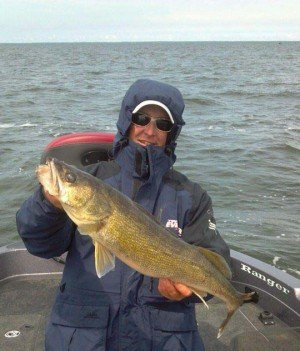National review of DNR management part of effort to boost walleye numbers in Mille Lacs Lake
 Unprecedented change is occurring at Mille Lacs Lake and the Minnesota Department of Natural Resources is taking unprecedented actions to address it.
Unprecedented change is occurring at Mille Lacs Lake and the Minnesota Department of Natural Resources is taking unprecedented actions to address it.
The MN DNR will convene a blue-ribbon panel of national fisheries experts to review past and current Mille Lacs management practices as part of a new effort to increase the legendary lake’s walleye population as quickly as possible with minimal impact to the local community.
“We will have nationally recognized fisheries experts review our work and offer recommendations,” said Don Pereira, DNR fisheries chief. “We want Mille Lacs lake back on track. This is one strategy to do that.”
Panel members are: Drs. Jim Bence and Travis Brenden, Quantitative Fisheries Center at Michigan State University; Dr. Paul Venturelli, University of Minnesota; Dr. Nigel Lester, Ontario Ministry of Natural Resources and the University of Toronto; and Dr. Lars Rudstam, Cornell University and Oneida Lake Field Station.
Mille Lacs, a 132,000-acre lake in central Minnesota, is long-favored by anglers due to its abundant walleye population. However, the walleye population has been in decline for a number of years. DNR Chief Pereira said a key problem is the vast majority of walleye that hatch do not survive to their second autumn in the lake.
He said that while the lake continues to have adequate walleye spawning stock and more than enough egg production and fry to repopulate Mille Lacs, the lake hasn’t produced a strong year-class of walleye since 2008.
To further help solve the problem, Pereira said the DNR intends to contract with a nationally recognized fisheries expert to do an intensive review of the state’s fish tagging and fishing population estimates.
These reviews, combined with a new predator diet study to determine impacts on small walleye survival and fishing regulations that aim to protect young walleye, are all part of a systematic approach to improve walleye fishing. The diet study also includes winter sampling of predator fish under the ice.
The DNR acknowledges that state and tribal fisheries management has played a role in the decline but long-term solutions will involve better understanding an evolving system that now has clearer water, a variety of unwanted aquatic invasive species, growing walleye predator populations and decreasing prey populations, such as perch and tullibee.
Pereira said the problem of promising walleye year classes that disappear year after year is linked to “system change.”
Change includes:
• Increased water clarity: Water clarity has nearly doubled since the mid-1980s. Improvement began about 25 years after the implementation of the federal Clean Water Act in the early 1970s and has trended sharply upward since zebra mussels were discovered in the lake in 2006. Improved water clarity has been linked to movement of young of the year walleye off-shore at smaller sizes, and may also have benefited sight-feeding fish that prey on walleye and perch.
• Increased walleye predator populations: Northern pike and smallmouth bass populations have risen significantly since the early 1990s. In 2013, the northern pike population increased to the highest level ever observed. The 2013 smallmouth bass population was the second-highest ever recorded. Smallmouth bass populations have been on the increase throughout Minnesota and Canada.
• Multiple aquatic invasive species: Once devoid of aquatic invasive species, Mille Lacs now contains zebra mussels, spiny water fleas, and Eurasian watermilfoil. While it’s unknown exactly what implications these infestations are having, it’s suspected the increase in milfoil is providing more ambush cover for northern pike. Also, water-filtering mussels are contributing to water clarity that allow more aquatic vegetation to grow at deeper depths and in more dense stands.
• Changing zooplankton community: First detected in 2009, spiny water flea numbers have fluctuated but show no signs of declining. Spiny water fleas may be having a negative impact on the native zooplankton community by directly competing with small fish for food and altering the historic aquatic food chain.
• Long-term changes in key forage species: The most prominent change is a decline in tullibee, likely the result of warmer water temperatures. A decline in tullibee is likely negatively affecting walleye in Mille Lacs, especially larger walleye, as walleye grow significantly faster when they are able to feed on this species because it is higher in calories than other prey species, including yellow perch.
“Clearly, Mille Lacs is undergoing system change,” Pereira said. “As we work to rebuild the walleye population these factors will influence management decisions.”
Pereira said the DNR is also exploring new and innovative ways to engage citizen input on future management decisions and will help support a new tourism marketing initiative that is being formed by the local community and Explore Minnesota Tourism.